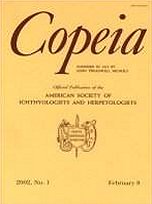Populations of Physalaemus petersi show extraordinary variation in the expression of facultative complex calls. Previous studies have shown that a structure in the larynx, the fibrous mass (FM1), is correlated with variation in production of the complex call among taxa in the Physalaemus pustulosus species group. We tested the hypothesis that the variation in the presence of call complexity that occurs within P. petersi mirrors the same laryngeal variation associated with complex calls among other species of the genus. We examined calls and larynges of P. petersi from populations on a north-south transect on the western side of its Amazonian distribution. All four populations of P. petersi (Peru and Brazil) in the south produce complex calls, whereas only one population of five in the north (Ecuador) produce complex calls. We compared larynges of four populations of P. petersi, two that produce complex calls and two that do not. We then compared them to larynges of P. pustulosus, which produces complex calls, and to Physalaemus coloradorum, which does not produce complex calls. The FM1 is significantly larger in populations of P. petersi that produce complex calls than those without complex calls. FM1 sizes of populations of P. petersi were more similar to other species with the same call type than they were to populations of their own species with a different call type. These data suggest several interpretations of the evolution of complex calls and the associated underlying morphology.
How to translate text using browser tools
1 August 2004
Population Variation of Complex Advertisement Calls in Physalaemus petersi and Comparative Laryngeal Morphology
Kathryn E. Boul,
Michael J. Ryan
ACCESS THE FULL ARTICLE





